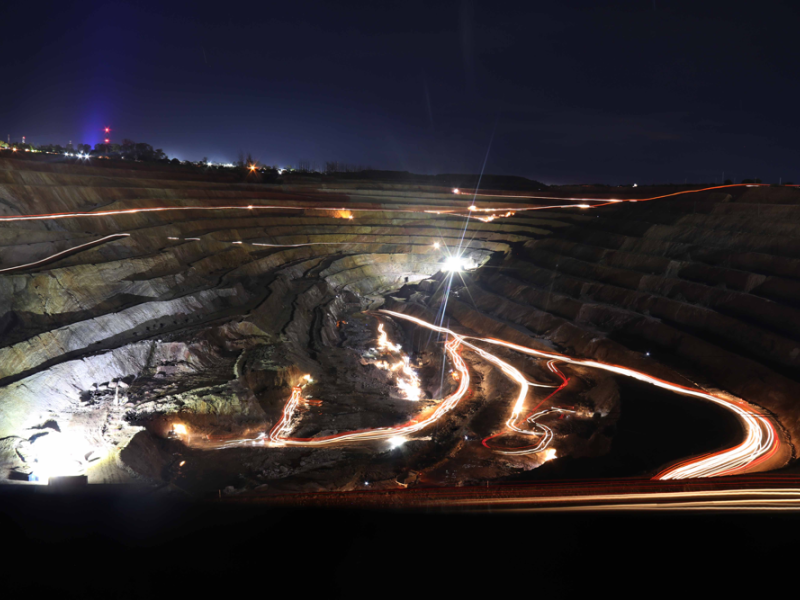Sheffield Forgemasters regains ASME accreditation
19 April 2024
The UK's Sheffield Forgemasters has been awarded accreditation by the American Society of Mechanical Engineers (ASME) as a supplier of heavy forgings and castings to the civil nuclear market. The company originally gained ASME accreditation as a Nuclear Material Organisation in 1992, but that had lapsed, with the lack of nuclear new-build in the following years.
.jpg?ext=.jpg) (Image: Sheffield Forgemasters)
(Image: Sheffield Forgemasters)The company's nuclear qualification came after an ASME Section III Division I NCA 3300 (NCA 3800), NCA 4000 and NQA-1 Code survey and audit recommended it for Material Organisation (MO), and welding (NPT) accreditations. ASME MO and NPT status means it can supply castings and forgings (material) for civil nuclear applications and also be qualified to carry out weld construction activities on these materials.
As well as being the sole UK supplier of large, nuclear-grade forgings and castings, Sheffield Forgemasters' MO and NPT status now makes it one of the only UK companies qualified for fabrication of the main components within a civil nuclear power plant.
The company said that, following the accreditation, it "will now continue its work to advance manufacturing technologies for the next generation of small modular reactor (SMR) civil nuclear power plants". It added that its status as the only company in the UK capable of manufacturing reactor vessel components for SMRs, coupled with its ASME status, make it "a crucial capability in delivery of this advanced power-generation technology".
"We undertook the ASME audit in November and have now received confirmation that the audit recommendation has been approved by the committee," Sheffield Forgemasters Group Technical Director Ian Nicholls said. "The accreditation is a huge development with heightened requirements and protocols embracing all our processes, employees and selected sub-suppliers.
"The ASME accreditation, coupled with our development of Electron Beam Welding for large diameter, nuclear-grade vessels, places Sheffield Forgemasters at the pinnacle of development for SMRs and presents significant possibilities for the UK's domestic nuclear new-build programme."
In February, Sheffield Forgemasters announced it had completed weld-assembly of a full-sized SMR nuclear vessel demonstrator assembly using Local Electron-Beam Welding (LEBW). It said the technique took less than 24 hours to complete four, thick, nuclear-grade welds, typically requiring a year of work to complete.
The company has signed memorandums of understanding with a number of SMR developers in the UK, including Rolls-Royce SMR, NuScale, GE Hitachi Nuclear Energy, Holtec Britain and X-energy.
Second tier of containment installed for BREST-OD-300
19 April 2024
The 184-tonnes tier - the second of three - has been lifted into place for the lead-cooled fast neutron reactor under construction at the Siberian Chemical Combine site in Russia.
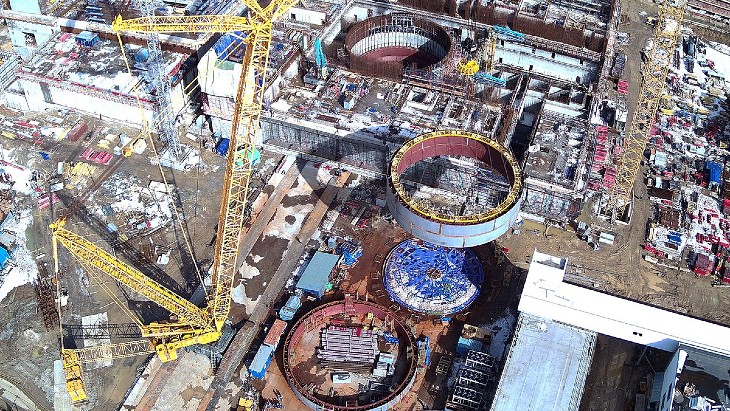 (Image: SCC)
(Image: SCC)
The steel reactor base plate and lower tier of the containment were installed at the turn of the year, the third enlarged unit is planned to be installed in the reactor shaft in December 2024. The final height of the structure will be 17 metres.
According to Rosatom: "The containment structure is the outer part of the reactor vessel. It provides retention of heat-insulating concrete, forming an additional localising barrier of protection, which surrounds the boundary of the coolant circuit. On its surface, the temperature should not exceed 60 degrees Celsius, and the radiation background is actually equal to the natural background."
The BREST-OD-300 fast reactor is part of Rosatom's Proryv, or Breakthrough, project to enable a closed nuclear fuel cycle. The 300 MWe unit will be the main facility of the Pilot Demonstration Energy Complex at the Siberian Chemical Combine site. The complex will demonstrate an on-site closed nuclear fuel cycle with a facility for the fabrication/re-fabrication of mixed uranium-plutonium nitride nuclear fuel, as well as a used fuel reprocessing facility.
 (Image: SCC)
(Image: SCC)
Last week, Russian nuclear regulator Rostechnadzor issued a licence which will allow the production of mock-ups of fuel assemblies with depleted uranium for the BREST-OD-300 reactor. The fuel fabrication/refabrication unit is the first of the PDEC facilities to be commissioned, with all the works scheduled to be completed by the end of 2024. TVEL said that "at the next stage, after obtaining the appropriate permission from Rostechnadzor to handle plutonium" the equipment will be used to directly produce fuel developed for the reactor - a mixed dense nitride uranium-plutonium fuel (MNUP) based on depleted uranium - a by-product of uranium enrichment for nuclear reactors - and plutonium extracted from irradiated nuclear fuel.
The target for the BREST-OD-300 reactor is to start operation in 2026.
According to the World Nuclear Association information paper on fast neutron reactors, "the BREST fast neutron reactor, of 700 MWt, 300 MWe has lead as the primary coolant, at 540°C, and supercritical steam generators. It is inherently safe and uses a mixed uranium and plutonium nitride fuel... no weapons-grade plutonium can be produced, since there is no uranium blanket - all the breeding occurs in the core ... fuel cycle is quoted at 5-6 years with partial refuelling at about 10 months. The initial cores can comprise plutonium and used fuel - hence loaded with fission products, and radiologically 'hot'. Subsequently, any surplus plutonium, which is not in pure form, can be used as the cores of new reactors. Used fuel can be recycled indefinitely, with onsite facilities. The nitride fuel has been successfully tested in the BN-600 reactor to a burn-up of 7.4%".
Initial operation of the demonstration unit will be focused on performance and after 10 years or so it will be commercially oriented. The plan has been that if it is successful as a 300 MWe unit, a 1200 MWe (2800 MWt) version will follow - the BR-1200.
Production to begin of innovative fuel for German research reactor
19 April 2024
France's Framatome and Germany's Technical University of Munich (TUM) have agreed to establish the industrialisation process for the manufacture of monolithic molybdenum-uranium (U-Mo) fuel for the university's FRM II research reactor. Framatome noted this low-enriched fuel will benefit from the highest uranium fuel density ever realised in Europe for research reactor operations.
.jpg?ext=.jpg) The signing of the agreement (Image: Christoph Kreileder, FRM II / TUM)
The signing of the agreement (Image: Christoph Kreileder, FRM II / TUM)
The 20 MWt FRM II, operating since 2005, is one of the most effective and modern sources of high-flux neutrons in the world. The reactor is not used to generate electricity, but to provide a neutron source for industrial and scientific use. Its neutrons are also used to produce medical radioisotopes and for the doping of high-purity silicon for the semiconductor industry, and the reactor has a facility for teletherapy of malignant tumours using fast neutrons.
.jpg)
TUM's FRM II research reactor (Image: B Ludewig / Framatome)
However, FRM II currently uses fuel enriched to over 95% uranium-235 to generate its dense neutron flux - and such high-enriched uranium (HEU) is seen as a nuclear proliferation risk. TUM has agreed with the German government and the Bavarian State - who finance the reactor - to work towards converting it to fuel with lower enrichments when a suitable fuel is available. This is also a condition of the reactor's operating licence, which was issued in 2003.
Monolithic U-Mo is the only fuel which can enable the reactor to perform as intended while using a low enrichment of less than 20% uranium-235, according to TUM. This is possible due to the high uranium density in the fuel, Framatome said.
In 2019, TUM contracted Framatome to develop the U-Mo foils manufacturing technique to support the existing technology of embedded foils in a cladding of aluminum. The first U-Mo foils were successfully manufactured in 2022 at Framatome's CERCA Research and Innovation Laboratory (CRIL) at Romans-sur-Isère in France. Inaugurated in 2019, CRIL is dedicated to developing uranium-based fuel for international research in physics and nuclear medicine.
CRIL, in cooperation with TUM, developed the key steps of the manufacturing process for a high-quality U-Mo fuel, including the manufacturing of small-scale prototypes, established a qualification procedure, and installed a pilot line in its research facility in Romans.
Irradiation of the first monolithic U-Mo fuel plate prototype is scheduled for late 2024.
"We have been working on this project since 2019 and we are proud to celebrate this important milestone with our client," said François Gauché, Vice-President of CERCA. "Our teams rose to the challenge of developing a high-tech fuel to meet the needs of research reactors and ensure their sustainability. We are now ready to take this to the next level and manufacture this innovative fuel."
"FRM II and Framatome have been working since 2019 to set up a European production line for monolithic U-Mo fuel," added Christian Pfleiderer, scientific director of the FRM II. "The hard work of our teams has paid off. This new fuel is the guarantee for a reliable and sustainable supply of neutrons for research and innovation."
Super module installed at first Lianjiang unit
18 April 2024
The CA01 'super module' has been installed at unit 1 of the Lianjiang nuclear power plant in China's Guangdong province, the Shanghai Nuclear Engineering Research and Design Institute (SNERDI) announced. It is the first of two CAP1000 reactors planned for the first phase of the plant.
.jpg?ext=.jpg) The CA01 module is hoisted into place (Image: SNERDI)
The CA01 module is hoisted into place (Image: SNERDI)
Weighing 1066 tonnes and measuring more than 27 metres long, 29 metres wide and 24 metres high, the concrete and steel CA01 module - composed of 47 sub-modules - sits inside the unit's containment module where it will house the plant's reactor pressure vessel, steam generators and other components. It is referred to as a super module because it is too large to be transported by road and rail, and was constructed on site.
The module was hoisted into place at Lianjiang 1 on 13 April in a process lasting 3 hours and 18 minutes.
.jpg)
The module in place within the containment building (Image: SNERDI)
The CAP1000 reactor design - the Chinese version of the AP1000 - uses modular construction techniques, enabling large structural modules to be built at factories and then installed at the site.
The largest and heaviest module - the cuboid-shaped CA20 - was installed at Lianjiang 1 in November.
The construction of the first two 1250 MWe CAP1000 reactors at the Lianjiang site was approved by China's State Council in September 2022. Excavation works for the units began in the same month, with the pouring of first concrete for the foundation of unit 1 completed at the end of September last year. Lianjiang unit 1 is expected to be completed and put into operation in 2028.
Once all six CAP1000 units at the site are completed, the annual power generation will be about 70.2 TWh, which will reduce standard coal consumption by more than 20 million tonnes, and reduce carbon dioxide emissions by more than 52 million tonnes, sulphur dioxide by about 171,000 tonnes and nitrogen oxides by about 149,000 tonnes.
State Power Investment Corp says the Lianjiang plant will be the first nuclear power project in China to adopt seawater secondary circulation cooling technology as well as the first to use a super-large cooling tower.
Framatome, KHNP to cooperate on medical isotope production
18 April 2024
Framatome and Korea Hydro & Nuclear Power (KHNP) are to assess the feasibility of producing medical isotope lutetium-177 in the Candu pressurised heavy water reactors at the Wolsong nuclear power plant in South Korea.
.jpg?ext=.jpg) The signing of the MoU (Image: KHNP)
The signing of the MoU (Image: KHNP)
Under a memorandum of understanding signed in Paris on 17 April, Framatome and KHNP will jointly perform a technical assessment at the plant using Framatome's isotope production technology. This technology has been successfully implemented on a commercial production level at the Bruce nuclear power plant in Ontario, Canada.
Lutetium-177 is a beta-emitting radioisotope used in targeted radionuclide therapy to treat prostate cancer by destroying cancer cells while leaving healthy cells unaffected.
"Framatome has been working with KHNP for decades to support the safe, reliable and sustainable operation of its nuclear fleet," said Catherine Cornand, Senior Executive Vice President of the Installed Base business unit at Framatome. "We are actively engaged in supporting the long-term operation of the Hanul 1 and 2 units for which Framatome is the Original Equipment Manufacturer. I am very happy to extend our cooperation through this new initiative at the Wolsong nuclear plant."
.jpg)
The Wolsong plant (Image: KHNP)
"We anticipate that commercial nuclear reactors will have an increasing role to play to backup and complement research reactors in the production of cancer-fighting radioisotopes," François Gauché, Director of Framatome Healthcare, said. "This cooperation will support the future supply chain readiness to make lutetium-177 treatments massively accessible across the world."
"With this initiative, KHNP stays consistent with its social responsibility commitment, by supporting the development of modern nuclear medicine treatments in South Korea while continuing its contribution to stable energy supply and carbon neutrality," said Chang Hee-Seung, Executive Vice-President, Quality and Technology Division at KHNP.
"We expect nuclear power to become a positive example of not only producing electricity but contributing to people's health and welfare," said KHNP CEO Hwang Joo-ho. "We will do our best to promote the project so that it can provide hope to many people fighting cancer."
In November last year, Framatome signed a similar cooperation agreement with Romania's Nuclearelectrica on exploring the production of the lutetium-177 at the Cernavoda nuclear power plant.
Framatome Healthcare, through its Isogen joint venture with Canada's Kinectrics, was involved in an international collaboration with Bruce Power and ITM Isotope Technologies Munic SE to produce lutetium-177 from a commercial nuclear power reactor for the first time in October in 2022 at Bruce unit 7. Like Wolsong and Cernavoda, Bruce 7 is a Candu pressurised heavy water reactor.
Constellation applies to renew Dresden licence
17 April 2024
US utility Constellation Energy Corporation has submitted a subsequent licence renewal application with the Nuclear Regulatory Commission (NRC) for its two-unit Dresden nuclear power plant in Illinois. The plant's operating licence was first renewed by the NRC in 2004.
.jpg?ext=.jpg) Dresden (Image: Constellation)
Dresden (Image: Constellation)
Filing the licence renewal application with the NRC kicks off a comprehensive, multi-year regulatory review process which will proceed along two tracks, one for the review of safety issues and another for environmental issues. The process involves site inspections, environmental reviews and public participation.
US reactors are initially licensed for up to 40 years of operation. The Dresden units - two boiling water reactors (BWRs) which began commercial operation in 1970 (unit 2) and 1971 (unit 3) - have previously received a first licence renewal from the NRC and are currently licensed to operate until 2029 and 2031, respectively. With the subsequent licence renewal, the units could operate until 2049 and 2051.
The Dresden units had been slated for early permanent closure in November 2021 had Illinois not passed policy reforms to support their continued operation.
Illinois in September 2021 passed legislation recognising the zero-carbon benefits of nuclear, and the plants both receive credits under Illinois state laws that prevented their early retirement and preserved the clean energy they provide, Constellation said. In addition, the federal Inflation Reduction Act which was passed the following year will also help support continued operation of the US nuclear fleet for at least nine years.
Constellation President and CEO Joe Dominguez said: "Extending the operating licences of the nation's nuclear fleet for an additional 20 years will add more clean megawatts to the grid than all the renewables ever built in this country, and those nuclear plants will continue operating long after the wind and solar facilities under construction today are retired.
"Nuclear produces half of America's clean energy, but many still take it for granted and wrongly assume it will always be there. In reality, Constellation reinvests hundreds of millions of dollars each year in its industry-leading nuclear fleet to keep these massive economic engines running, providing thousands of family-sustaining jobs, preserving energy security and delivering the unmatched reliability we need to grow our economy while addressing the climate crisis."
In February, the company applied for a 20-year licence renewal for its Clinton nuclear power plant, also in Illinois. This would be this first licence renewal for the single-unit BWR unit, which entered commercial operation in 1987 and is currently licensed to operate until April 2027.
Researched and written by World Nuclear News
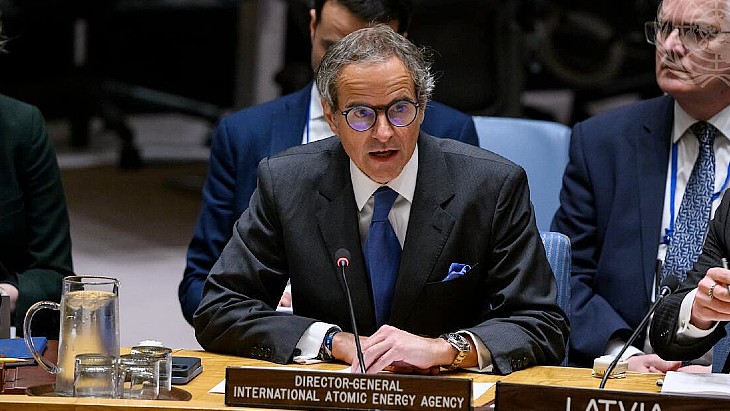 The IAEA's Grossi addressing the UN Security Council (Image: UN Photo/Loey Felipe)
The IAEA's Grossi addressing the UN Security Council (Image: UN Photo/Loey Felipe)
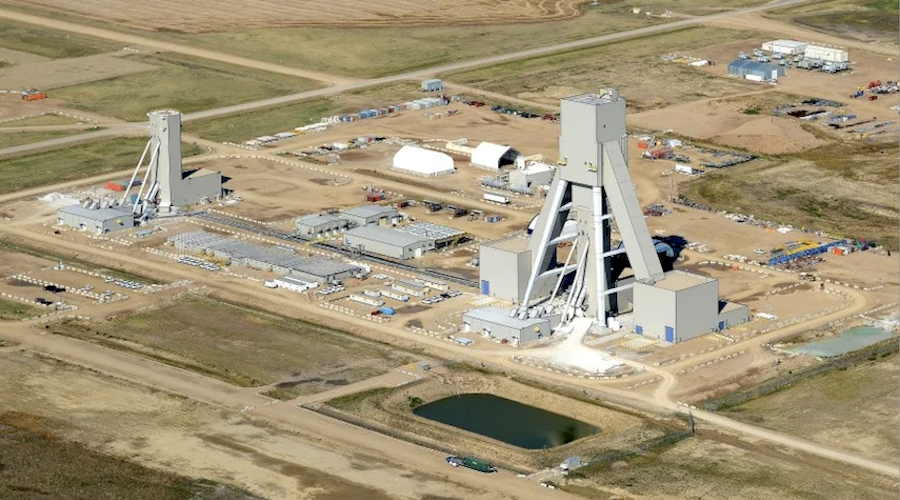

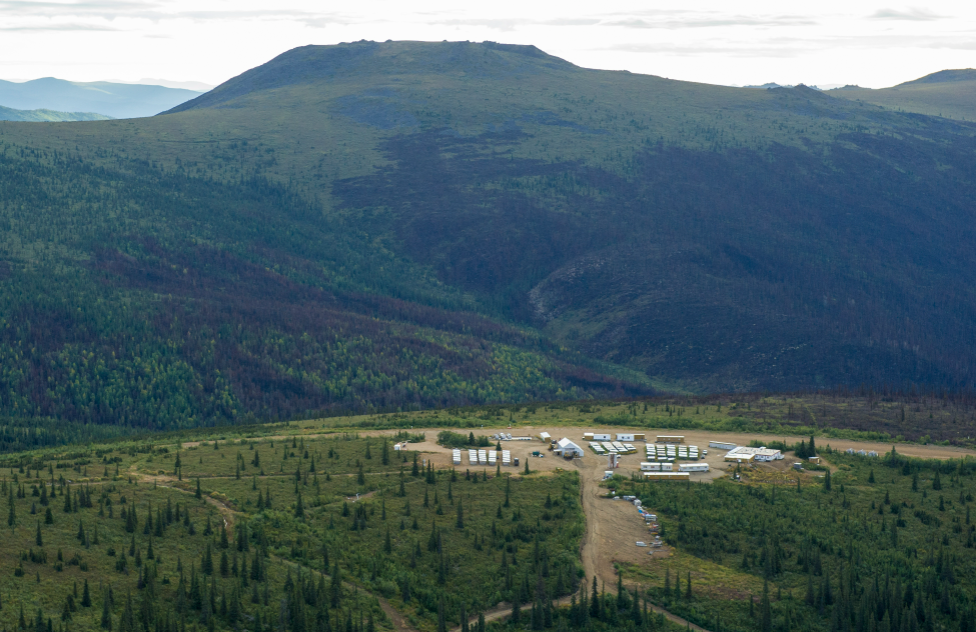

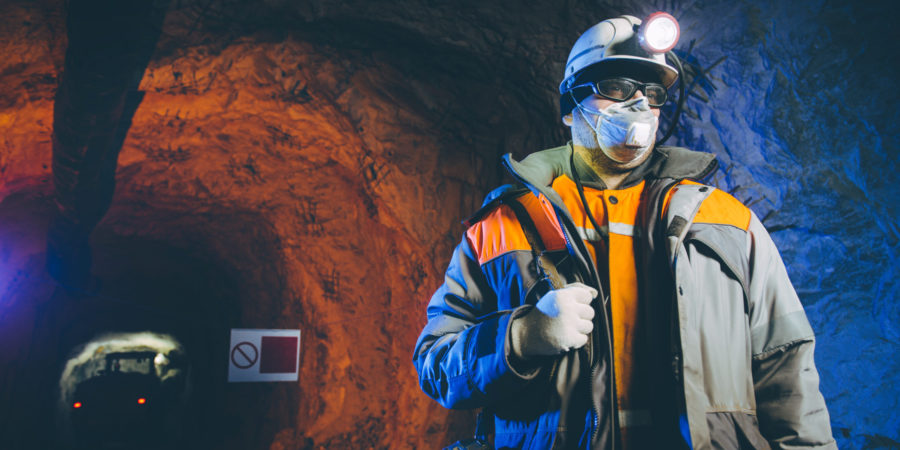 Stock image.
Stock image.